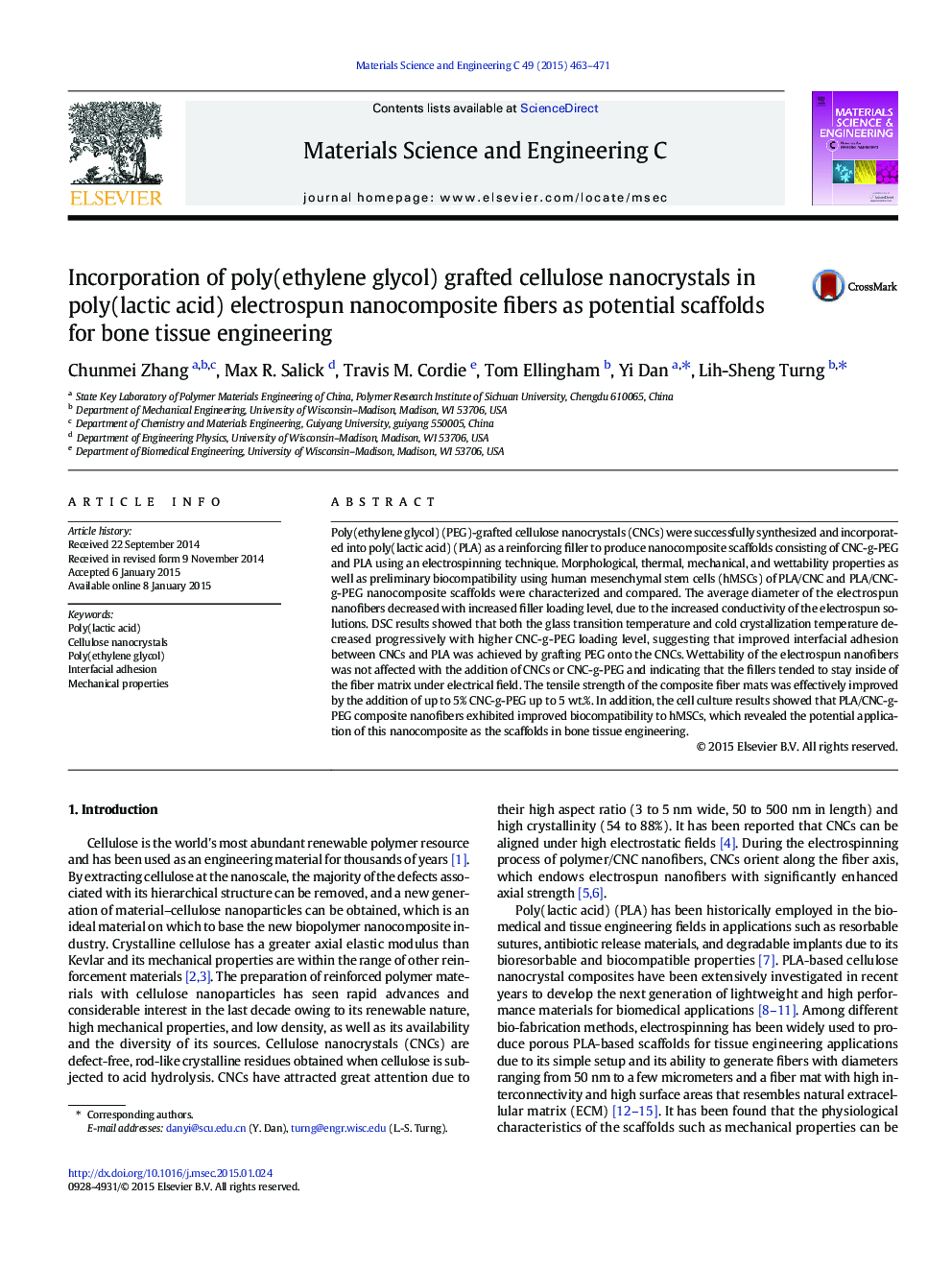| کد مقاله | کد نشریه | سال انتشار | مقاله انگلیسی | نسخه تمام متن |
|---|---|---|---|---|
| 1428201 | 1509172 | 2015 | 9 صفحه PDF | دانلود رایگان |
• Reactive PEG epoxide was synthesized and successfully grafted onto CNCs.
• CNCs grafted with PEG (CNC-g-PEG) showed enhanced dispersion in PLA matrix.
• CNC-g-PEG decreased glass transition and cold crystallization temperature of PLA.
• CNC-g-PEG effectively improved the tensile strength of PLA composite nanofibers.
• PLA/CNC-g-PEG (5%) scaffold showed improved biocompatibility with hMSCs.
Poly(ethylene glycol) (PEG)-grafted cellulose nanocrystals (CNCs) were successfully synthesized and incorporated into poly(lactic acid) (PLA) as a reinforcing filler to produce nanocomposite scaffolds consisting of CNC-g-PEG and PLA using an electrospinning technique. Morphological, thermal, mechanical, and wettability properties as well as preliminary biocompatibility using human mesenchymal stem cells (hMSCs) of PLA/CNC and PLA/CNC-g-PEG nanocomposite scaffolds were characterized and compared. The average diameter of the electrospun nanofibers decreased with increased filler loading level, due to the increased conductivity of the electrospun solutions. DSC results showed that both the glass transition temperature and cold crystallization temperature decreased progressively with higher CNC-g-PEG loading level, suggesting that improved interfacial adhesion between CNCs and PLA was achieved by grafting PEG onto the CNCs. Wettability of the electrospun nanofibers was not affected with the addition of CNCs or CNC-g-PEG and indicating that the fillers tended to stay inside of the fiber matrix under electrical field. The tensile strength of the composite fiber mats was effectively improved by the addition of up to 5% CNC-g-PEG up to 5 wt.%. In addition, the cell culture results showed that PLA/CNC-g-PEG composite nanofibers exhibited improved biocompatibility to hMSCs, which revealed the potential application of this nanocomposite as the scaffolds in bone tissue engineering.
Figure optionsDownload as PowerPoint slide
Journal: Materials Science and Engineering: C - Volume 49, 1 April 2015, Pages 463–471
